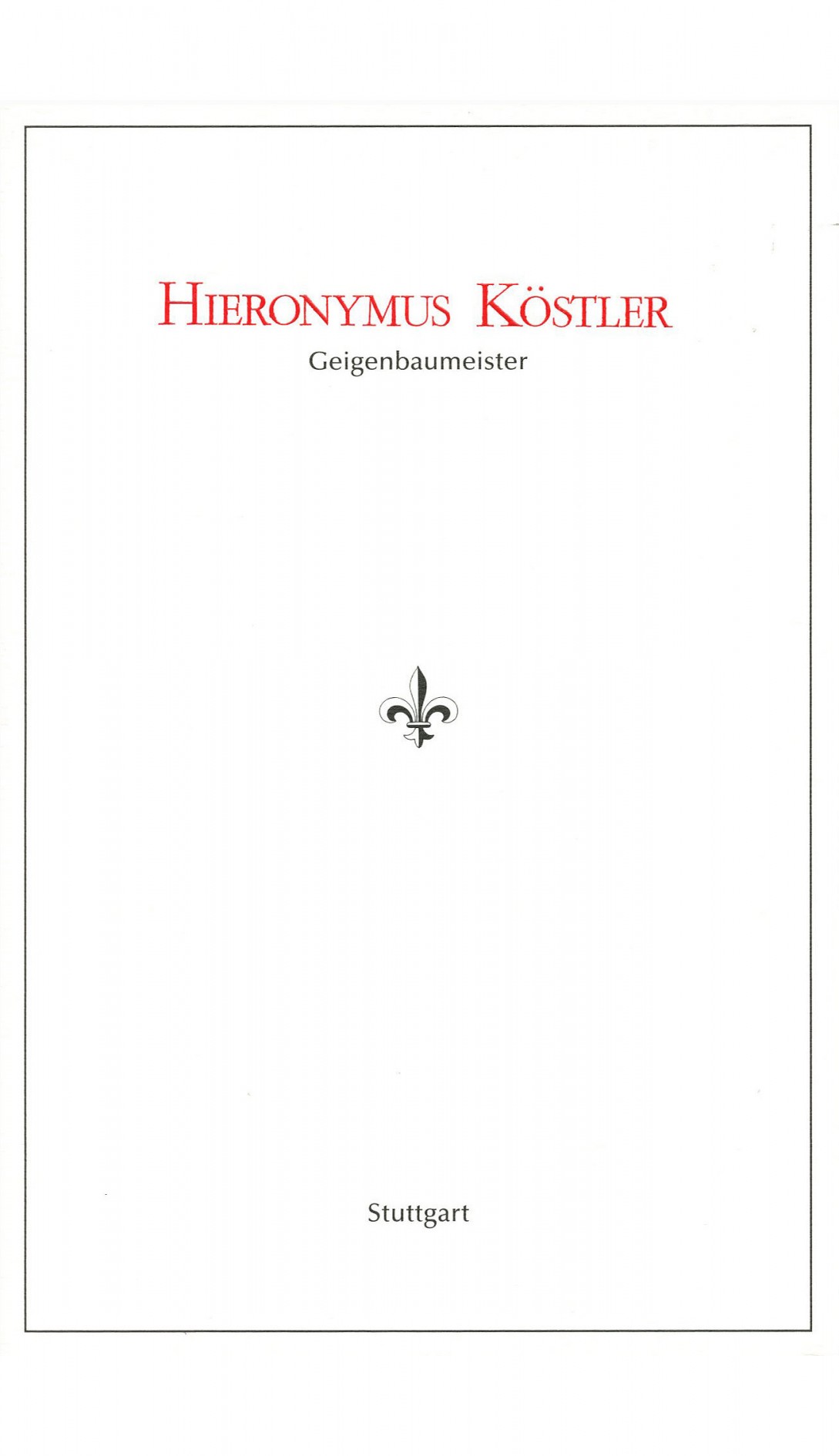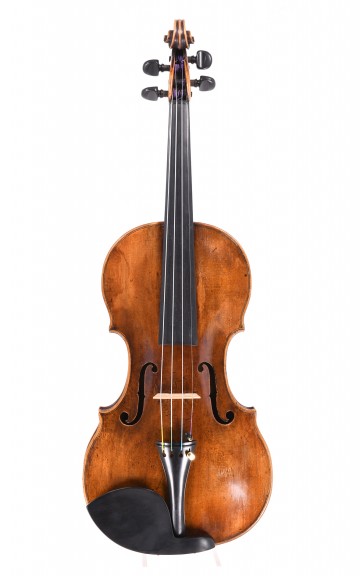Notes on Hieronymus Köstler, expert for old stringed instruments, restorer and luthier, in Stuttgart, Germany
One of the top addresses in the world of historic instruments is the Stuttgart atelier of Hieronymus Köstler, where valuable violin-making masterpieces and fine stringed instruments have been restored, appraised and traded since 1982. Below is a brief portrait of the Stuttgart expert for historic stringed instruments. At the tender age of 16, Hieronymus Köstler left his home town of Munich to study at the highly acclaimed Violin-Making School of Mittenwald and to learn, as he put it, “no doubt the finest approach to handling wood.” After completing his training as the youngest of his class, he took up his trade and diligiently applied himself to becoming a master in restoring historic stringed instruments. Two years later he had become a journeyman under Max Möller in Amsterdam, and following that he took the plunge and went to London, one of the foremost cities for trading historic instruments. There he spent four years at the famous atelier of J. & A. Beare Ltd.
Upon returning to Stuttgart, Hieronymus Köstler found the ideal environment for opening his own business. A mere four years after his studio was founded, there were ten journeymen in his employ, and he made his way into the small and exclusive circle of internationally renowned experts in restoring and appraising older stringed instruments. Köstler's appraisals enjoy the utmost confidence among musicians, collectors, merchants and investors around the world. It is obvious that violin expert Hieronymus Köstler's work as an appraiser is enhanced by the specialist knowledge and practical experience he gained as a violin maker and restorer. But the inverse is true as well: his finely-honed sensitivity as an expert informs the hands-on work he does on instruments. One of his guiding principles is not to allow the original to be altered by the restoration. If original wood is present, none of it should be removed: this means that any corrective procedure can be reversed if it turns out not to be ideal. Such strict and carefully considered standards have not only benefited the valuable historic instruments that are restored in Hieronymus Köstler's atelier – they also serve the many journeymen well who perfect their craft there.
Hieronymus Köstler · Hohenzollernstraße 16 · 70178 Stuttgart · GERMANY
Phone: +49 711 601 602
Related articles:
Contemporary violin makers - the modern artisans
Eric Blot, expert of Cremona and Italian violin making
Jean-François Raffin: ten hours - and not a word
Le Canu-Millant: lutherie and expertise
Vatelot-Rampal: on the art of healing violins
Beares, London: expertise in changing times
W. E. Hill & Sons – on the Mt. Parnassus of the art of violin making
The Mittenwald violin making competition and other contests
Mittenwald: violin making “in the midst of the forest”
Markneukirchen: violin making in “German Cremona”
Mirecourt: the spacious home of French violin making
Eugene Sartory: the modern classic of bow making
François Xavier Tourte, founding father of the modern violin bow
Bow maker and entrepreneur H. R. Pfretzschner
The Hopf violin: on a dynasty of Vogtland violin makers
Silent electric violins - a guide to technical standards and quality characteristics
How to select a violin, provenance, value and violin appraisal
Jérôme Thibouville-Lamy - JTL









